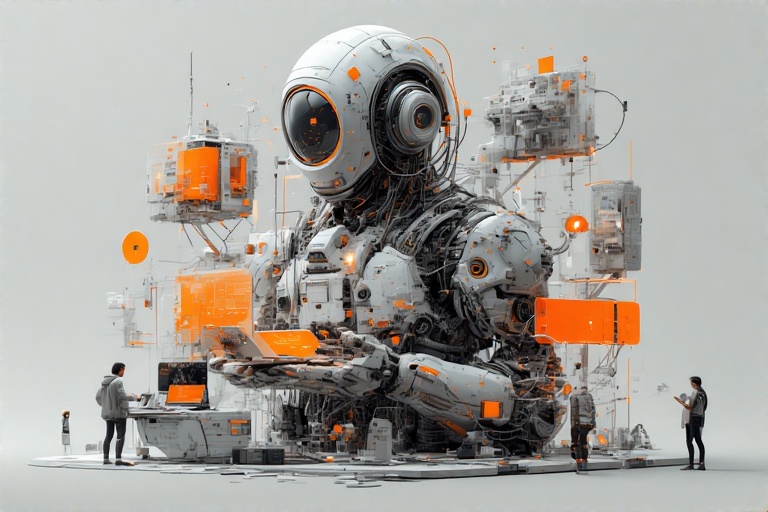Imagine walking into your living room and having digital instructions hover beside your refrigerator, guiding you step by step through a recipe. Or donning a lightweight headset at work that places a virtual blueprint over the machine you’re repairing. Spatial computing makes these scenarios real by uniting augmented reality (AR), virtual reality (VR) and artificial intelligence (AI) so that the boundary between our screens and our surroundings fades away.
1. From Screens to Spaces
Traditional computing lives on a flat display. You tap, click or scroll to navigate. Spatial computing, by contrast, treats your entire environment as the interface. Cameras, depth sensors and motion trackers map the world in three dimensions. AI processes that data in real time, recognizing surfaces, objects and people. Once your surroundings are “digitally aware,” applications can anchor text, 3D models and interactive controls directly onto walls, tables—even the air.
2. Core Technologies Powering Spatial Experiences
- Depth Sensing & Photogrammetry: Devices like the iPad Pro’s LiDAR scanner or Intel RealSense cameras build accurate 3D meshes of a room in seconds.
- Simultaneous Localization and Mapping (SLAM): Algorithms track your position and update the spatial map as you move—no external beacons needed.
- Edge AI & TinyML: Compact neural networks running on-device interpret gestures, identify objects and generate augmented overlays without pinging a remote server.
- High-Fidelity Displays: Next-gen AR glasses and VR headsets pack micro-OLED panels or pancake optics to render crisp visuals with minimal bulk.
- Open Standards: Frameworks such as OpenXR and WebXR simplify cross-platform development, letting apps run on headsets, mobile browsers and desktop clients alike.
3. Real-World Transformations
Spatial computing isn’t confined to labs. Industries across the board are already reaping its benefits. Let me show you some examples:
- Manufacturing & Maintenance: Technicians wearing AR headsets see repair steps projected onto heavy machinery, slashing error rates and downtime.
- Healthcare: Surgeons overlay MRI or CT scans onto a patient’s body during operations, improving precision and reducing invasive explorations.
- Education & Training: Students explore life-sized virtual molecules in chemistry or rehearse fire-drill protocols in a digital twin of their firehall.
- Retail & E-Commerce: Shoppers place virtual furniture in their homes or “try on” digital apparel via mobile apps before buying.
- Architecture & Construction: Clients walk through a full-scale holographic model of a planned building, adjusting layouts with simple hand gestures.
- Urban Planning: City officials consult 3D twins of neighborhoods to simulate traffic flows, energy use and emergency evacuations.
4. A Five-Step Primer to Launch Your Own Spatial Project
- Pick a High-Value Scenario: Focus on tasks where 3D context adds clear value—assembly guidance, site inspections or immersive presentations.
- Survey Your Hardware: Determine which sensors and headsets suit your environment—smartphones with ARKit/ARCore, standalone headsets or mixed-reality glasses.
- Capture the Space: Use depth scans or photogrammetry apps to create an initial 3D mesh, then refine anchor points and lighting for accuracy.
- Build Interaction Logic: Write simple rules or integrate AI models that respond to gestures, voice commands or object recognition events.
- Test & Iterate: Gather user feedback on comfort, accuracy and speed. Tweak your AI thresholds, refine anchor stability and adjust visual clarity.
5. Overcoming Challenges & Safeguarding Ethics
- Privacy Risks: Constant spatial mapping can reveal personal details. Keep sensitive data on-device, anonymize meshes and secure cloud communications.
- Security Surface: Every sensor and wireless link is a potential entry point. Enforce hardware-backed encryption, signed firmware updates and network isolation.
- Interoperability Gaps: Vendor-specific formats can fragment the experience. Advocate for open APIs and contribute to community-driven standards.
- Accessibility: Not everyone can use gesture or gaze controls. Offer voice overlays, haptic feedback and traditional UI fallbacks.
- Content Integrity: Blended realities can mislead if not labelled clearly. Use subtle visual cues to distinguish AI-generated layers from physical objects.
6. What’s Next for Spatial Computing?
- By 2027, analysts forecast over 25 billion edge-AI sensors feeding spatial-aware services across industries.
- Emerging headsets will integrate sub-millimeter eye tracking, real-time facial mapping and mixed-reality pass-through so sharp you hardly notice the lens.
- Federated learning will let devices personalize AI models locally—sharpening object recognition and interaction fluency without exposing private data.
- No-code spatial platforms will empower designers and educators to assemble AR workflows by dragging and dropping AI, 3D assets and business logic.
- Spatial computing will become a core pillar of the “metaverse,” tying together collaborative virtual spaces, digital twins and real-time IoT control planes.
Spatial computing heralds a shift from passive screens to living interfaces that adapt to our surroundings. As AR, VR and AI converge at the edge, our environments will not just display information—they’ll become responsive partners in how we learn, work and play.







Add a Comment